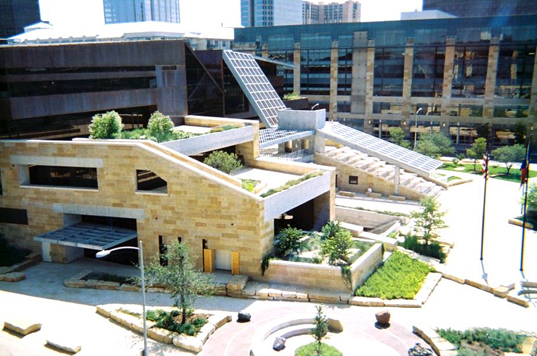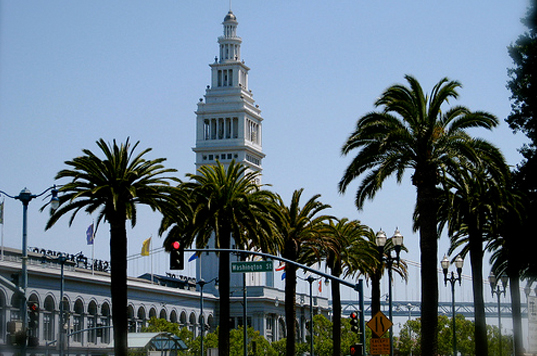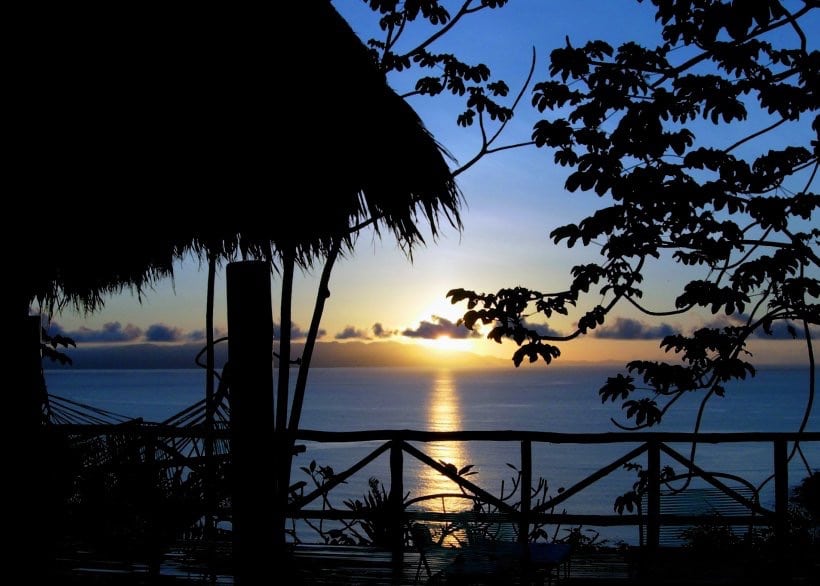The flight, the cab rides, and the water it takes to wash your towels every day at the hotel … vacations are great for relaxing, but even better for making an enormous carbon footprint.
For those who’d rather be a little more ecologically conscious this travel season, here’s a list of the cities where you’ll be more likely to find five-lane bike paths than freeways.
Chicago, IL
Chi Town’s motto, “Urbs in Horto” when translated into English means “City in a Garden”. And what a garden it is, with no less than 552 parks spanning 7,300 acres of land, 33 beaches and 10 wildlife gardens. Chicago surprises it visitors who may have expected a more intimidating metropolis.
It’s easy to go green in Chicago, thanks to labels like the Green Seal and “Guaranteed Green” which help tourists make informed decisions about where to stay and eat. The city boasts a total of nineteen “Guaranteed Green” restaurants (look for the green fork decal in the windows) and thirteen hotels certified by the Green Seal, more than any other city in the U.S.
Since Chicago is one of the five most walkable cities in the country, getting around doesn’t necessarily involve motor vehicles. It’s home to the second largest public transportation system in America and has recently started a bike sharing system like many major European cities. The Bike 2015 Plan promises to install 500 miles of bikeways and over 10,000 bike racks citywide by 2015.
For even more fresh air, check out some of the largest parks in the countrywide, like Lincoln Park, which welcomes over 20 million visitors each year, or the famous Navy Pier on Lake Michigan’s waterfront, where you’ll find restaurants, museums, exhibition halls, a ferris wheel and a bustling harbor. Many of Chicago’s biggest museums have also started using environmentally friendly practices by participating in the Green Museum Initiative.

Austin, TX
Not only is Austin home to the “best people” according to Travel & Leisure magazine, but it’s also one of the most environmentally friendly cities in America. Officials have concentrated heavily on ecological issues even before going green became cool, so you’ll be hard pressed not to find plenty of green hotels and restaurants that cater to whatever travel experience you’re looking for.
Austin’s public transportation system is one of the cheapest in the country; the bus will take you from the airport to downtown for only 75 cents! And as the home of Lance Armstrong, it’s ideal for cyclists. A $3 million bicycle highway project that bears his name is currently underway, with five miles of road already completed.
In a city that gets 300 days of sunshine each year, there’s always something to do outside. Austin has 220 parks and a 10-mile hike-and-bike trail around scenic Lady Bird Lake, where you’ll find water temperatures as high as 70 degrees year round. And for those who prefer to stay off the beaten track, there’s Hippie Hollow Park, the only officially sanctioned clothing-optional park in Texas, if that’s your kind of thing.
Perhaps the best reason to visit Austin this summer is the City Hall rooftop, a LEED gold certified 12,000 sq. ft. plaza that features a waterfall, solar panels, and garden terrace that was built in 2007 to promote sustainability in public places. As the self-proclaimed “Live Music Capital of the World”, the green roof has an amphitheater where live music takes place every Friday at noon from April to December.
Portland, OR
Fans of Portlandia already know it’s home to some of the most eco-conscious people in the world, and also the most likely to tell you about it. But the city’s slew of environmental awards gives the locals more than a few bragging rights.
With over a dozen hotels that are green-certified, Portland makes it easy for tourists to enjoy its natural beauty without having to worry about wasting water or energy during their stay. Plus, half of the city’s power comes from renewable sources.
Outside, there’s plenty to do as well. Waterfront Park spans the length of downtown, and Mount Tabor Park, which sits atop a volcano, is known for its scenic views and reservoir. Every week between March and Christmas, head to the Portland Saturday Market where you’ll find artisan crafts and imports, or take advantage of Portland’s bike-ability by renting a bicycle and hitting up a mountain trail.
Foodies love Portland because of its long history of farm-to-fork practices. Over 20 farmers’ markets and 35 community gardens contribute to Portland’s restaurant scene, where there are plenty of vegetarian and vegan options, too. The city’s also a coffee snob’s delight; it’s the home of Stumptown Coffee Roasters, a leader in fair trade practices.

Boston, MA
It’s a big accomplishment that Boston is one of America’s greenest cities when half the year it’s covered in white. But with an impressive campaign to reduce pollution, increase recycling and promote clean transportation, Beantown and its surrounding suburbs lead New England in eco-friendly practices.
In Boston, there are 28 green-certified hotels and 29 restaurants and event centers, a convenient metro system (the T) and even hybrid taxis. Best of all, it’s commonly called “America’s Walking City”, so skip the wheels altogether and take a stroll through Boston’s historic winding streets.
While you’re there, stop by the famous New England Aquarium (there are penguins!), play a game of kickball on the Boston Commons, or if the weather’s nice rent a sailboat or kayak on the Charles River. The 17 mile Esplanade trail which runs alongside its banks is great for biking or rollerblading.
If you’re hungry, check out one of Boston’s many vegetarian and vegan-friendly restaurants like 303 Café, which specializes in local food. Haymarket, the oldest and largest farmer’s market in the city is open on Fridays and Saturdays, and if you don’t mind the lines, there are also numerous Trader Joe’s locations around town.
While it’s certainly green during the summer, Boston’s even better in the fall, when orange, yellow and red foliage cover scenic college campuses. So even if you can’t make it up north for Boston’s Greenfest August 16-18, there’s still more to see before the sub-zero weather kicks in.

San Francisco, CA
It’s no surprise that the hippie haven of the world is also home to some of the most eco-conscious citizens. With its famous cable cars and a taxi fleet of 92% hybrid vehicles, it’s easy for tourists to go green, too.
As a city small in geographic area, it’s even more impressive that they reserve 17% of its 47 square miles to parks and open space. Check out Golden Gate Park, which takes up three miles of land and features a botanical garden, a music concourse area, a stadium and even a lake. But the best part about it is the California Academy of Sciences, one of the largest natural history museums in the country and the largest public LEED certified building in the world, making it just about the greenest tourist attraction you could possibly imagine. The center houses an aquarium, planetarium, 3D theatre, lecture hall, two restaurants, garden, aviary, and panoramic views of the park, not to mention an entire four-story rainforest.
To eat, hop on over to the Ferry Building, where you’ll find over 30 vendors with locally grown organic foods and a farmers’ market on Tuesdays and Saturdays. And if you’re shopping around for a place to stay, consider the Orchard Garden Hotel, one of the nation’s only LEED certified hotels that has a rooftop garden and an energy-control feature in its rooms. Just be sure to wear some flowers in your hair.
www.austintexas.org
www.travelportland.com
www.cityofboston.gov
www.sanfrancisco.travel



